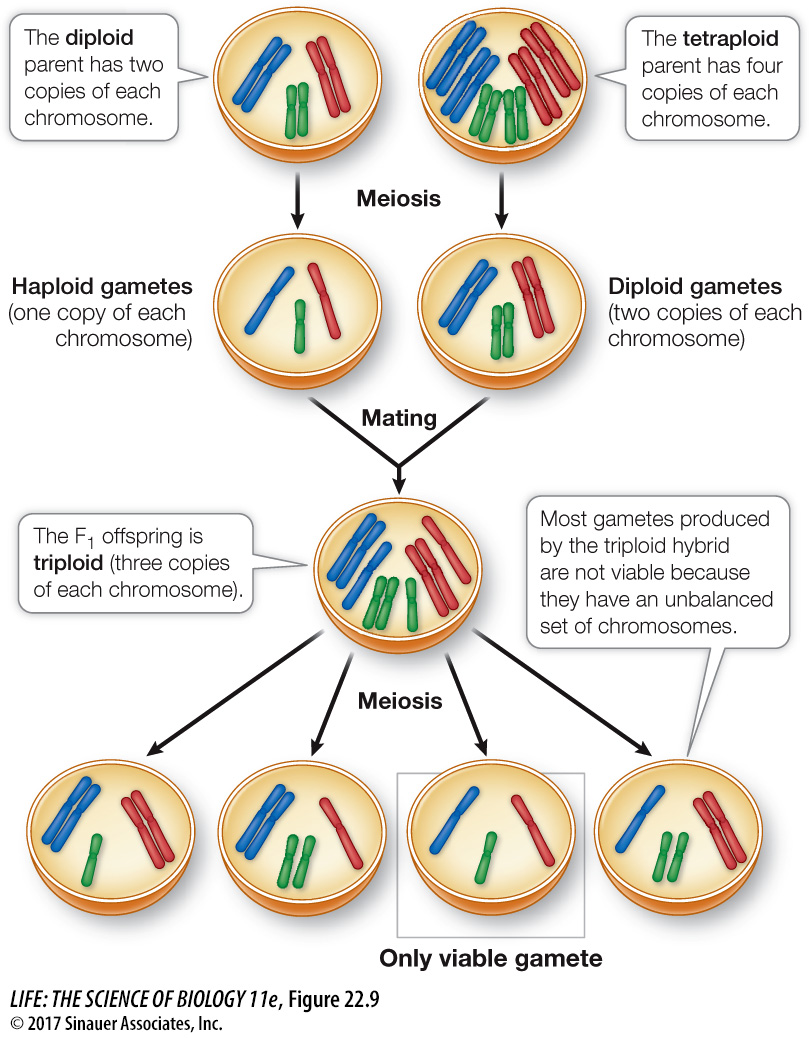Sympatric speciation occurs without physical barriers
Geographic isolation is usually required for speciation, but under some circumstances speciation can occur in the absence of a physical barrier. Speciation without physical isolation is called sympatric speciation (Greek sym, “together with”). But how can such speciation happen? Given that speciation is usually a gradual process, how can reproductive isolation develop when individuals have frequent opportunities to mate with one another?
DISRUPTIVE SELECTION Sympatric speciation may occur with some forms of disruptive selection (see Key Concept 20.4) in which individuals with certain genotypes have a preference for distinct microhabitats where mating takes place. For example, sympatric speciation via disruptive selection appears to be taking place in the apple maggot fly (Rhagoletis pomonella) of eastern North America. Until the mid-
Today the two groups of Rhagoletis pomonella in the eastern United States appear to be on the way to becoming distinct species. One group mates and lays eggs primarily on hawthorn fruits, the other on apples. The incipient species are partially reproductively isolated because they mate primarily with individuals raised on the same fruit and because they emerge from their pupae at different times of the year. In addition, the apple-
POLYPLOIDY The most common means of sympatric speciation is polyploidy, or the duplication of sets of chromosomes within individuals. Polyploidy can arise either from chromosome duplication in a single species (autopolyploidy) or from the combining of the chromosomes of two different species (allopolyploidy).
An autopolyploid individual originates when, for example, two accidentally unreduced diploid gametes (with two sets of chromosomes) combine to form a tetraploid individual (with four sets of chromosomes). Tetraploid and diploid individuals of the same species are reproductively isolated because their hybrid offspring are triploid. Even if these offspring survive, they are usually sterile; they cannot produce normal gametes because their chromosomes do not segregate evenly during meiosis (Figure 22.9). So a tetraploid individual usually cannot produce viable offspring by mating with a diploid individual—

Allopolyploids may be produced when individuals of two different (but closely related) species interbreed. Such hybridization often disrupts normal meiosis, which can result in chromosomal doubling. Allopolyploids are often fertile because each of the chromosomes has a nearly identical partner with which to pair during meiosis.
Speciation by polyploidy has been particularly important in the evolution of plants, although it has contributed to speciation in animals as well (such as the tree frogs in Figure 22.2). Botanists estimate that about 70 percent of flowering plant species and 95 percent of fern species are the result of recent polyploidization. Some of these species arose from hybridization between two species followed by chromosomal duplication and self-
Most populations separated by a physical barrier become reproductively isolated only slowly and gradually. If two incipient species once again come into contact with each other, what keeps them from merging back into a single species?